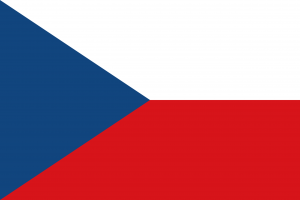Language/Czech/Grammar/Gender
Hi Czech learners! 😊
In this lesson, we will tackle an essential aspect of the Czech language: gender. Czech has three genders: masculine, feminine and neuter. Each gender affects the form of the noun itself, as well as the adjectives and pronouns that modify it.
Consider broadening your understanding by checking out these related lessons: Introduction to Adverbs & Verb to be with names and places.
Gender in Nouns[edit | edit source]
In Czech, each noun has a gender. Unfortunately, there are no rules that will help learners predict the gender of a given noun. Therefore, it is necessary to remember the gender of nouns as you learn them. Fortunately, there are a few tendencies that may help you:
- Most nouns that end in -a are feminine, e.g. máma (mom), kniha (book), růže (rose)
- Most nouns that end in a consonant are masculine, e.g. pes (dog), stůl (table), vlk (wolf)
- Most nouns that end in -o are neuter, e.g. město (city), oko (eye), zvířátko (little animal)
However, there are many exceptions to these tendencies. Therefore, the best solution is to learn the gender along with the noun.
Examples[edit | edit source]
Here are some examples of common nouns and their genders:
| Czech | Pronunciation | English |
|---|---|---|
| stůl | /stuːl/ | table (masculine) |
| kniha | /knɪɦa/ | book (feminine) |
| město | /mjɛsc̟ɔ/ | city (neuter) |
| muž | /muʒ/ | man (masculine) |
| růže | /ruːʒɛ/ | rose (feminine) |
| zvířátko | /zviːrzaːtkɔ/ | little animal (neuter) |
"The" and "A" in Czech[edit | edit source]
In English, "the" can refer to something specific (definite article), while "a" refers to something non-specific (indefinite article). In Czech, the equivalent of "the" is ten for masculine, ta for feminine and to for neuter. The equivalent of "a" is jeden for masculine, jedna for feminine and jedno for neuter.
For example, to say "the table" in Czech, you would say ten stůl (masculine), while to say "a book" in Czech, you would say jedna kniha (feminine).
Gender in Adjectives[edit | edit source]
Adjectives in Czech must match the gender of the noun they describe. This means that if a noun is masculine, any adjectives that describe it must also be in the masculine form.
For example, the adjective velký (big) changes depending on the gender of the noun. For the masculine noun pes (dog), the correct form is velký pes, while for the feminine noun kniha (book), the correct form is velká kniha and for a neuter noun such as město (city) the correct form is velké město.
Examples[edit | edit source]
Here are some more examples of adjectives with different genders:
| Czech | Pronunciation | English |
|---|---|---|
| červený pes | /tʃɛrvěniː pɛs/ | red dog (masculine) |
| zelená kniha | /zɛlɛnaː knɪɦa/ | green book (feminine) |
| modré město | /mɔdreː mjɛsc̟ɔ/ | blue city (neuter) |
Gender in Pronouns[edit | edit source]
In Czech, personal pronouns also have different forms depending on the gender of the person or object they refer to. The most commonly used personal pronouns are já (I), ty (you-singular informal), on (he), ona (she), ono (it), my (we), vy (you-plural/polite) and oni (they-masculine), ony (they-feminine), ona (they-neuter). As you may have noticed, Czech has special pronouns for the plural forms of "they" depending on the gender of the objects referred to.
For example, to say "she loves him" in Czech, you would say ona ho miluje, while to say "they (feminine) see her" in Czech, you would say ony ji vidí.
Conclusion[edit | edit source]
In summary, Czech has three genders: masculine, feminine and neuter. Nouns, adjectives and pronouns all need to agree in gender. While there may be some tendencies to help guess the gender of certain nouns based on their spelling, it is important to learn the gender of each noun individually. To improve your Czech Grammar, you can also use the Polyglot Club website. Find native speakers and ask them any questions!
➡ If you have any questions, please ask them in the comments section below.
➡ Feel free to edit this wiki page if you think it can be improved. 😎
Examples of Gender in Context[edit | edit source]
- Person 1: Kde je moje kočka? (Where is my cat?)
- Person 2: Ona je v kuchyni. (She is in the kitchen.)
- Person 1: Já mám nový stůl. (I have a new table.)
- Person 2: Ten je opravdu pěkný. (That one is really nice.)
Sources[edit | edit source]
- Czech nouns - gender: masculine, feminine, neuter
- Appendix:Czech nouns - Wiktionary
- Czech declension - Wikipedia
Great work on completing this lesson! Take a moment to investigate these connected pages: Possessive Case in Czech & Introduction to Nouns.
Videos[edit | edit source]
Learn Czech Grammar - Grammatical gender - YouTube[edit | edit source]
Other Lessons[edit | edit source]
- Verb There to be in Czech
- Verbs
- How to Use Be
- Locative Case in Czech
- Indefinite articles in Czech
- Questions
- Definite articles in Czech
- Verb to be with names and places
- Dative Case in Czech
- Negation

